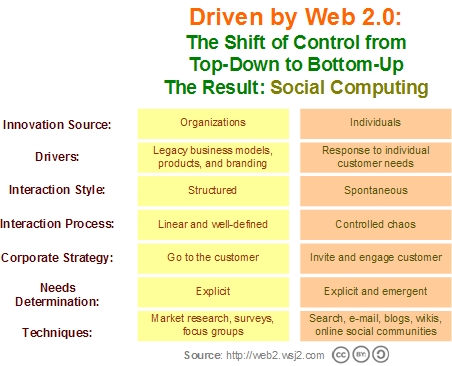The idea of social computing is getting a lot of play these days, most notably this week as folks discuss the fall-out, good and bad, of Chevy’s own large-scale experiement in this space, Chevy Apprentice. Forrester’s Charlene Li wrote some good coverage about this yesterday, as did ZDNet’s Dan Farber. For those of you not following the premise yet, social computing is the fallout of the mass deployment of two-way style Web 2.0 technologies to a world-wide audience that is ready and eager to use them. What happened with Chevy Apprentice? Chevy created a community Web site where anyone could post their theme-based remix videos in an Apprentice style competition for their Chevy Tahoe product line. Over 22,000 videos were ultimately submitted.
Compellingly, Ed Peper notes on his the GM Fastlane blog that “early on we made the decision that if we were to hold this contest, in which we invite anyone to create an ad, in an open forum, that we would be summarily destroyed in the blogosphere if we censored the ads based on their viewpoint. So, we adopted a position of openness and transparency, and decided that we would welcome the debate.” This led to environmentalists posting anti-SUV videos that were actually welcomed. This allowed Chevy to illuminate their position as the most environmentally friendly line of SUVs (Note: This is their claim, I have no idea.) While some believe it was marketing spin, I think Chevy was almost certainly poised to take advantage of both good and negative publicity, surely understanding that this was going to happen.

As far as I’m concerned, Charlene Li is absolutely correct when she writes, “if you’re going to participate as a marketer in the social computing arena, you’ve got to have thick skin and be ready to engage in the messy world of your customer’s opinions. Marketers that have the guts to turn over their brand to the public will in the end win over their customers.” And Chevy apparently wins here. The question will be whether this is the beginning of a trend or a isolated incident.
However, phenomenons like Katrinalist and CivicSpace shows what’s possible with these technologies or provide tools that fundamentally change the conception of how to create online communities spontaenously in terms of trigging network effects at a grassroots level. The sheer number of contributions in the Chevy Apprentice campaign is a fascinating data point. This shows us that sites like YouTube are not only educating folks about what’s possible but is also making video remixing and sharing the new mass entertainment medium. This is true mass peer production amongst a now-global “audience” of participants instead of top-down production of media by a few self-appointed practioners. While the possibilities and potential are truly striking, there will many good and bad consequences of all this, not the least the relentless deflation and reshaping of existing media institutions.
The upshot: There is a giant bow-wave of user generated content forming on the Web. The bell curve effect tells us that the best of it is very, very good and will likely eclipse (sooner rather than later) anything you can get from commercial sources. Finding the good content in the haystack is getting easier and easier all the time. The outcome is quite clear, even while the economics of it very much aren’t yet.
All of this highlights what social computing describes, the fundamental shift of control from organizations to individuals. The mass attention and participation of the global market is is increasingly moving to places like MySpace, SecondLife, and YouTube. And any other place where rewarding, social experiences can be readily had instead of the solitude of the one-way transmission of traditional media in the form of TV, radio, and newspapers. And these latter meda forms will become dramatically marginalized until and unless they figure out how to turn their viewers into participants.
Do Web 2.0 technologies and technique turn control upside down? Have good examples?
